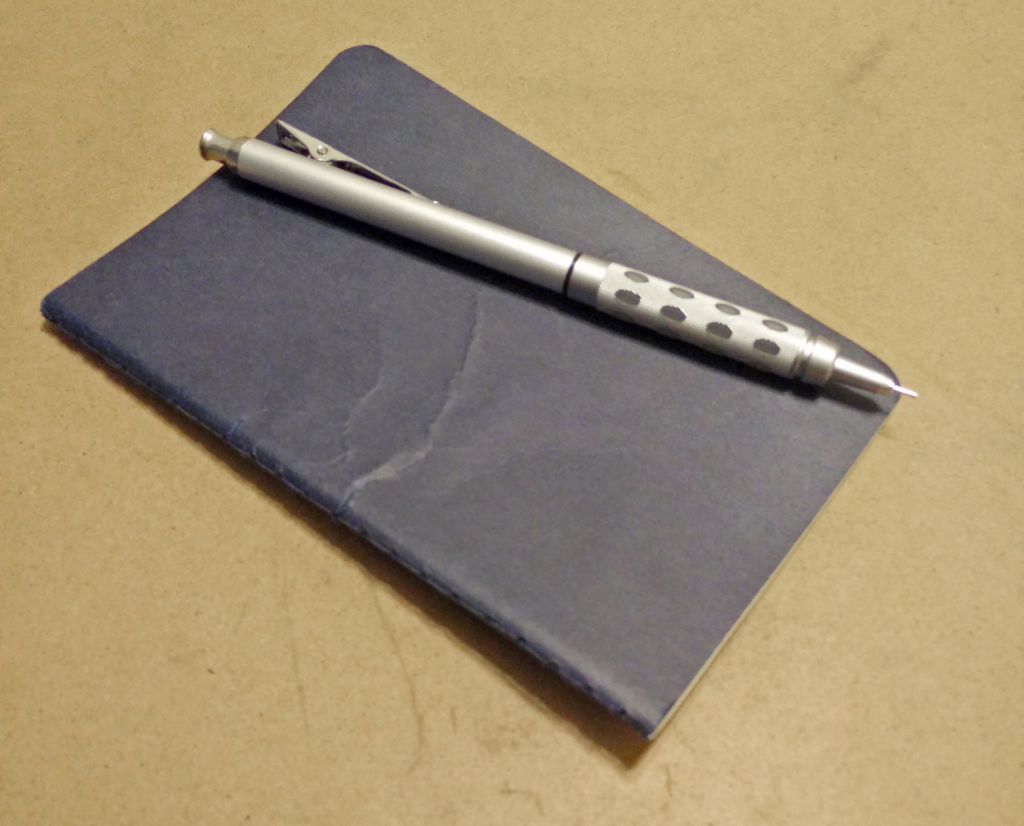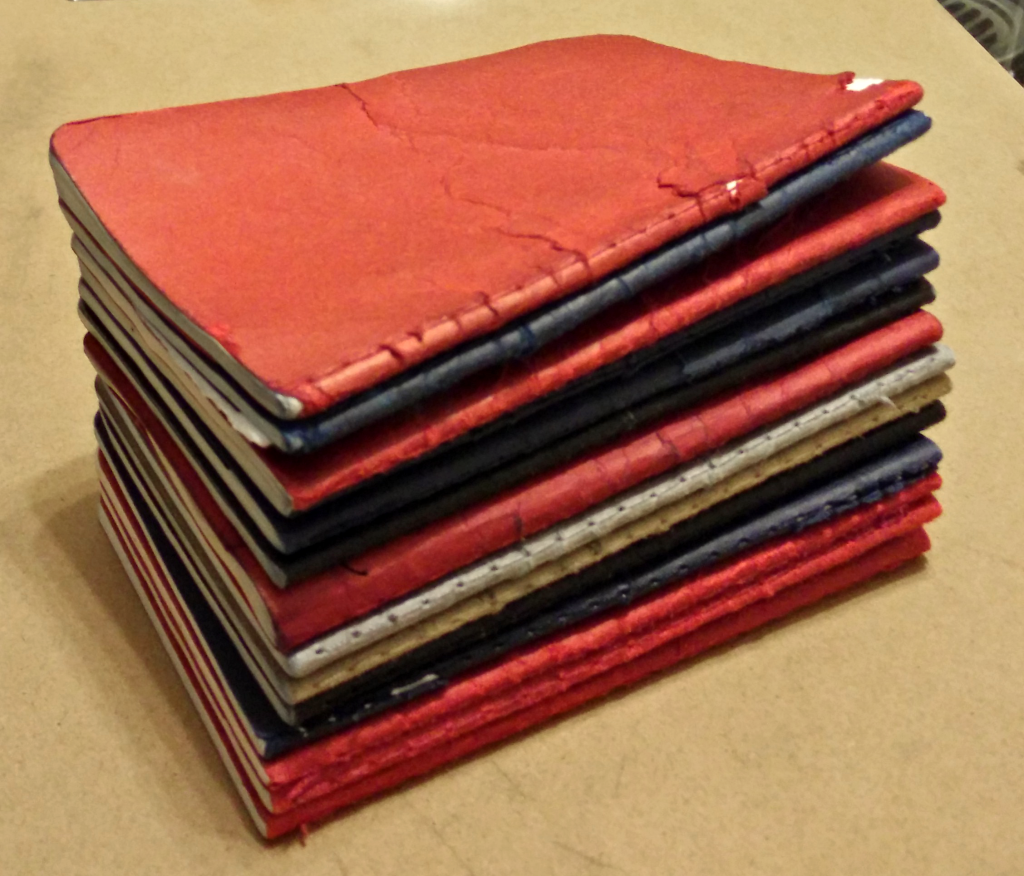I
often tell people they should always carry a notebook on them to jot down notes and ideas whenever they strike. Even though I’d like to take credit for this advice, the act of collecting ideas and notes in a single place isn’t a novel one and has actually been utilized throughout history, as a practice known as commonplacing.
Commonplacing or having a commonplace book is characterized by having a book where you write/collect information. In other words, it is a way to compile knowledge. The premise is having a central repository for ideas, anecdotes, quotes, observations, facts, and information that you come across in life.
You can think of it as a written scrapbook that contains nuggets of wisdom that have resonated with you personally. You’re collecting them for future use, from research and ideas to inspiration and stories.
The commonplace book has been around for centuries, being utilized by some of the greatest minds in history including Marcus Aurelius, Thomas Jefferson, Ralph Waldo Emerson, John Locke, Bill Gates, and many more.
Here are a few characteristics of a commonplace book:
1. Historically it has been a book or notepad, but it can be any central repository.
2. The book often has some sort of crude organizational system that arranges the material.
3. Every commonplace book is unique, as it’s based on the creators interests and experiences.
4. It is not a diary or a travel log of events, but an aggregation of knowledge. It’s THE original information management tool before such a thing ever existed.
5. The purpose of the book is to synthesize knowledge into the essential wisdom that can be later used by the creator.
Naturally the stoic philosopher Seneca explains the value of commonplacing in only a way he could:
We should hunt out the helpful pieces of teaching and the spirited and noble-minded sayings which are capable of immediate practical application… and learn them so well that words become works.
As you can tell, commonplace books have been used by readers, writers, leaders, philosophers, teachers, and scholars, and here’s how you can start keeping one too.
1. Read Far & Wide
Consume information widely & profusely: read, listen, learn, observe and explore constantly. Inspiration can come from anywhere and often strikes in the most unlikely of places, so pay attention. At the same time, don’t focus too much in any particular medium or subject – read fiction and step outside your comfort zone, the connections you find may surprise you.
2. Document What You Like
As you’re consuming all of that information, be sure to document the things that stick out to you. Whether it’s highlighting a passage, bookmarking a page, cutting out an article, or jotting down an idea – make sure you’re documenting everything that stands out. The goal is to collect wisdom, not facts. A great example of this is your marginalia, which are the notes, scribbles and comments a reader may make in the margins of a book as he/she reads. These are often a treasure trove of ideas and insights.
3. Move Tidbits To Your Commonplace Book
The next step is to transcribe all the bits of information into your commonplace book. There are two approaches here: either you collect the information and move them all at once into your book or, if you have your book handy, you can add information directly to it as you go. I prefer the latter when possible.
On the other hand, when I read on my Kindle or am on the go, its easier for me to refer back to my notes on my device and add them to my book when I get a chance. The key is to make sure they end up in your book one way or the other.
A couple of things come to mind when it comes to your book. First, don’t worry too much about the organization at the start. The system will become clear to you on its own over time. Two, don’t let the notes pile up because it’ll get harder and harder to find the time to translate them into your book. Try and stick to a daily or weekly schedule. Finally, if you’re not sure what to use as your book, I’d recommend either a Moleskine (my personal choice seen to the right) or a Field Notes notebook, but any book will do. The key is that it’s a physical representation.
4. Avoid The Technology
I love technology and am a huge fan of both EverNote and OneNote, but in this case I prefer to stick to the analog approach. I feel like the commonplace book loses its value when all you have to do is copy paste something from your kindle or an article.
More importantly, I feel we tend to get a little too organized when it comes to technology, with our tabs and tags and folders. In that process we lose one of the best parts of keeping the book in the first place – the serendipitous connections that form as different pieces of information are found side by side. I believe it’s better if it’s handwritten, it makes it more powerful, more memorable, and if it was good enough for some of the greatest thinkers ever, then I think it’ll work for us too.
5. Review them often
Finally, make sure you actually go back and review your commonplace books every so often. They will be collecting years of wisdom and knowledge and if you never review them, then you’ll miss the entire point of the practice. They are a lifetime project that get better with time, so make sure to give them the attention they command.
__________
Commonplacing is the act of creating the best book you’ve ever owned.
So that’s the quick and dirty on how to actually start your own commonplace book, but how does it really benefit you? We’ve touched on some of the value it adds above, but here’s the definitive list of why a commonplace book is a must in your daily life.
1. Collect the best of your ideas, musings, and knowledge in a single place.
2. Source of creativity, where ideas and connections are made side by side, page by page.
3. Introspective tool that gives you a glimpse into your self and helps you understand your passions and desires.
__________
Hopefully I’ve sold you on the idea of a commonplace book and you’re ready to start your own. Before I let you go, I just wanted to give you some insight on my own book.
I keep a Moleskine on me at all times that serves as my commonplace book (although it often gets mistaken as my passport). I’ve been carrying one since 2011, when my good friend Jimmy convinced me of the practice. Since then, its been a staple in my life and I’m currently working on my 18th notebook. I’ve reviewed them often and I’m always pleasantly surprised about what I discover when I do: from forgotten ideas to ways of living and everything in between.
Overall, I don’t think I could survive without my notebook today and hopefully you’ll give it a try. If you have any questions about the practice, feel free to comment below. Cheers!
Image via flickr


Pingback: No Wasted Ink Writer’s Links | No Wasted Ink
I love this idea. I’ve always kept journals, but this would allow for quicker references to ideas, thoughts, feelings, etc.
Really enjoying reading your blog Aly! Keep on creating 👌🏽
Glad you like it and thanks for the support! I’ll be writing consistently going forward, so let’s see where it goes 🙂